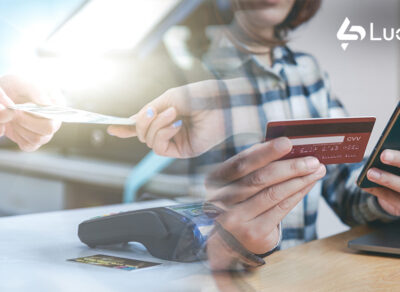Why Two-Factor Authentication Matters in UPI Payments

In today’s fast-evolving digital landscape, the convenience of making payments through Unified Payments Interface (UPI) has transformed the way we transact. UPI has rapidly become one of the most popular payment methods in India, enabling users to send and receive money instantly across different banks, apps, and platforms. With its ease of use and speed, UPI has unlocked unparalleled opportunities for businesses and consumers alike. However, with this increased usage comes the rising importance of securing these transactions.
That’s where Two-Factor Authentication (2FA) plays a crucial role.
What is Two-Factor Authentication (2FA)?
At its core, Two-Factor Authentication (2FA) is a security process that requires two distinct forms of identification to verify a user’s identity. Unlike the traditional username and password method, which only requires something you know (a password), 2FA adds an extra layer of security by asking for something you have or something you are.
In the context of UPI, this typically involves a combination of:
1. Something you know—your UPI PIN, a password, or a secret phrase.
2. Something you have—usually a one-time passcode (OTP) sent to your registered mobile number or email, or through biometric authentication (such as a fingerprint or face recognition).
This dual-step approach ensures that even if a malicious actor gains access to your password or UPI ID, they cannot complete a transaction without the second authentication step.
Why is Two-Factor Authentication Essential for Secure Transactions?
With the widespread adoption of digital payments, UPI transactions have become a prime target for cybercriminals looking to exploit any vulnerabilities in the system. In a world where data breaches and financial fraud are increasingly common, 2FA adds a critical layer of security that prevents unauthorized access to your UPI account and protects your financial assets.
Here’s why Two-Factor Authentication is non-negotiable in the world of UPI payments:
1. Preventing Unauthorized Access: Passwords alone can be weak or stolen, and when they’re the only line of defense, they leave room for potential breaches. With 2FA, a hacker would need access to both your password and the second factor of authentication (such as your phone or biometric data), making it much harder to gain unauthorized access.
2. Protecting Against Phishing Attacks: Phishing is a method where attackers try to trick you into revealing your sensitive information, such as your UPI PIN or bank account details. Even if a cybercriminal manages to obtain your password through phishing, they would still require the second authentication factor (OTP or biometrics) to complete a payment, making it far more difficult for them to steal funds.
3. Securing Remote Transactions: UPI allows users to make payments remotely, often on unsecured networks like public Wi-Fi. Without 2FA, these transactions would be highly vulnerable to interception by hackers. 2FA makes sure that even if someone intercepts the transaction, they can’t complete it without the second verification step.
4. Ensuring Compliance with Regulations: Financial and banking institutions, including UPI service providers, are required to comply with the Reserve Bank of India’s (RBI) guidelines on secure electronic transactions. One such requirement is the use of multi-factor authentication (MFA), including 2FA. By implementing 2FA, UPI ensures that it stays compliant with regulatory standards for secure payments.
How UPI’s 1-Click 2FA Sets it Apart
While two-factor authentication is a common feature across various payment systems, UPI’s 1-click 2FA sets it apart by offering both convenience and security. UPI integrates a one-click method of authenticating transactions through a Single Authentication Factor (SAF)—this means you authenticate transactions seamlessly with minimal hassle.
Here’s how UPI’s 1-click 2FA enhances the payment experience:
• Seamless User Experience: UPI’s design ensures that 2FA doesn’t disrupt the transaction process. Once you’ve entered your UPI PIN or logged in using your biometric details, you are ready to make the payment. This easy-to-use feature offers minimal friction, ensuring quick, secure, and hassle-free payments.
• Instant OTP Verification: For most UPI transactions, an OTP is sent to the user’s registered mobile number or email, which must be entered to complete the transaction. The OTP system ensures that only the user with access to the phone or email account can verify the payment. This authentication is done in real-time, reducing delays and maintaining the transaction’s speed.
• Biometric Integration: Increasingly, UPI allows for biometric authentication (fingerprint or face recognition) to complete the second factor of authentication. This enhances both security and user convenience, as biometrics can’t easily be replicated, ensuring that only the legitimate user can authorize a payment.
• Quick Recovery in Case of Errors: UPI also allows users to quickly recover their authentication credentials if they forget their UPI PIN or experience other issues. This makes it easy for users to continue using UPI without fear of being locked out of their accounts.
The Future of UPI Authentication
As India continues to embrace the digital revolution, UPI is expected to play an even more prominent role in facilitating cashless transactions. While the introduction of 2FA has significantly enhanced the security of UPI payments, the future may see even more advanced forms of multi-factor authentication (such as behavioral biometrics, voice recognition, or two-factor via smart wearables) to further improve security without compromising convenience.
Additionally, as UPI expands to integrate more global payment systems and methods, the importance of securing cross-border transactions will grow, ensuring that UPI continues to evolve its security standards.
Conclusion
Two-Factor Authentication is more than just an added security feature—it’s a necessary safeguard that ensures your UPI transactions are protected in an increasingly digital world. UPI’s 1-click 2FA makes the payment experience secure and efficient without adding unnecessary complexity, providing the best of both worlds for users.
As UPI continues to drive India’s digital payment ecosystem, adopting and using secure methods of authentication, like 2FA, will ensure that your transactions remain safe, fast, and hassle-free. So next time you make a UPI payment, rest assured that this additional layer of protection is working behind the scenes to keep your finances secure.



